Weekly Tech Recap - № 270 - RyZen 5000 series, PS5 teardown, Nvidia Maxine, Google Workspace and Unreal Engine HMI
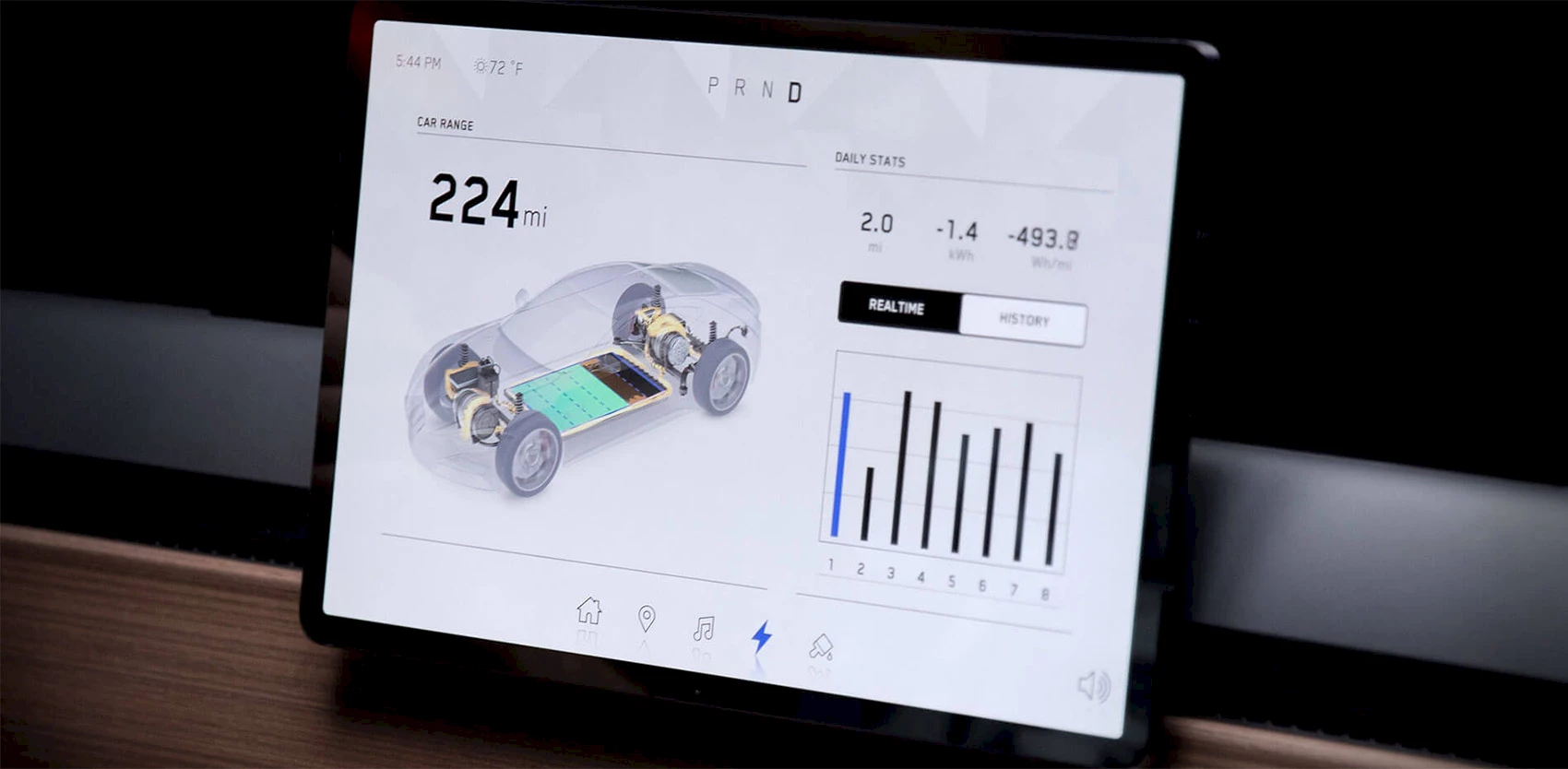
RyZen 5000 series
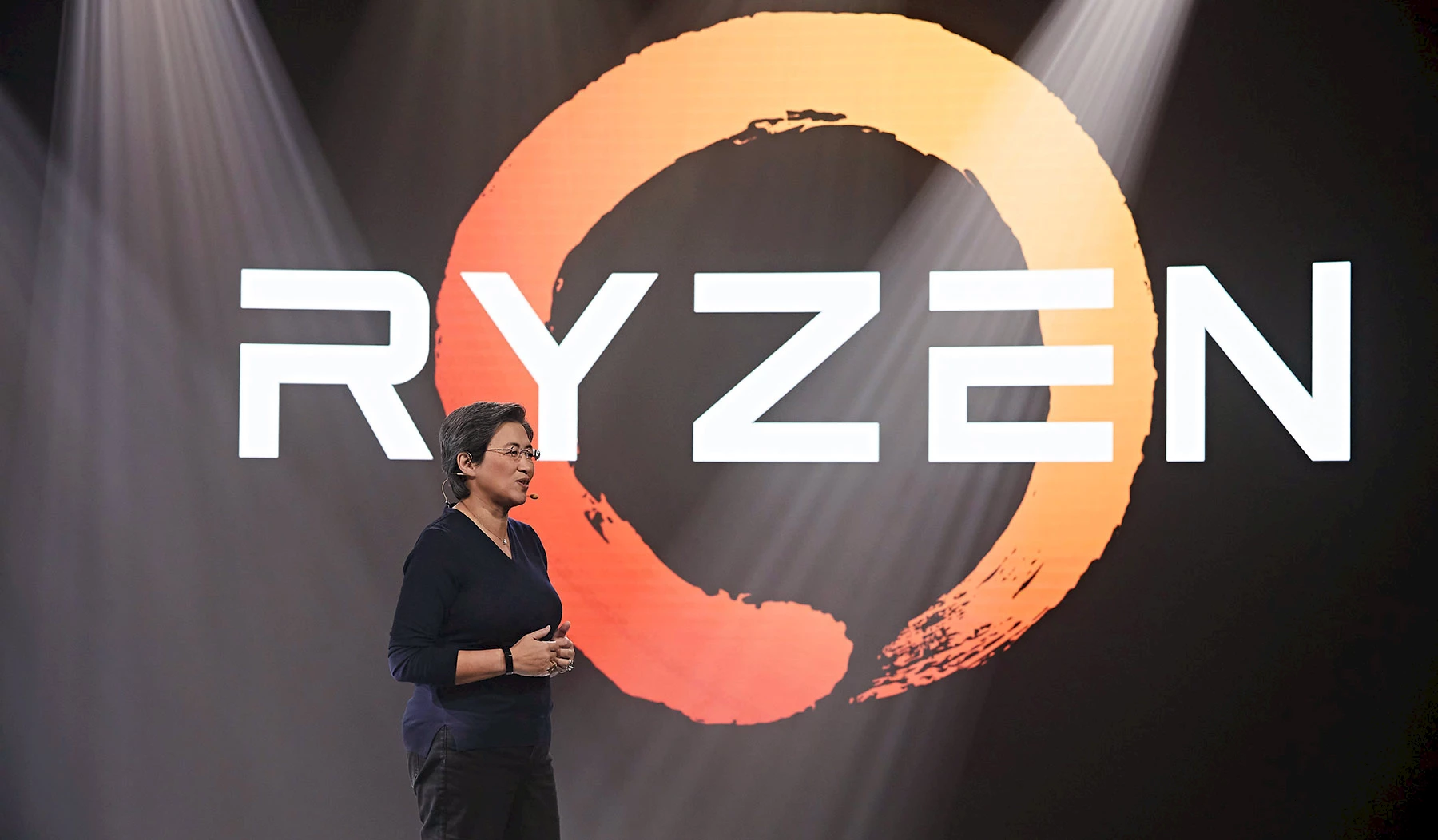
Lisa Su. © AMD.
AMD CEO Lisa Su announced a new family of processors for desktops, the RyZen 5000 series, replacing the 3000 series launched in May 2019. Four new processors, based on Zen 3 architecture, were shown: the 16-core RyZen 9 5950X (USD800), the 12-core RyZen 9 5900X (USD550), the 8-core RyZen 7 5800X (USD450) and the entry-level, 6-core RyZen 5 5600X (USD300). These 5000 series processors are still based on AMD’s 7nm process, but provide a 19% instructions per clock cycle (IPC) improvement and average performance gains of 26% compared to the previous generation. Unabashedly targeting gamers, AMD held up internal benchmarks showing that the RyZen 9 5900X beat Intel’s i9-10900K in terms of performance on a wide array of titles, including League of Legends, Dota 2, Shadow of the Tomb Raider, among (many) others. All four models will be available as of November 5. Also, AMD will be unveiling its new line of Radeon RX 6000 graphics cards on October 28.
⇨ YouTube, “Where Gaming Begins | AMD Ryzen™ Desktop Processors.”
⇨ Ars Technica, Jim Salter, “AMD’s new Zen 3 Ryzen desktop CPUs arrive November 5.”
Démontage de la PS5
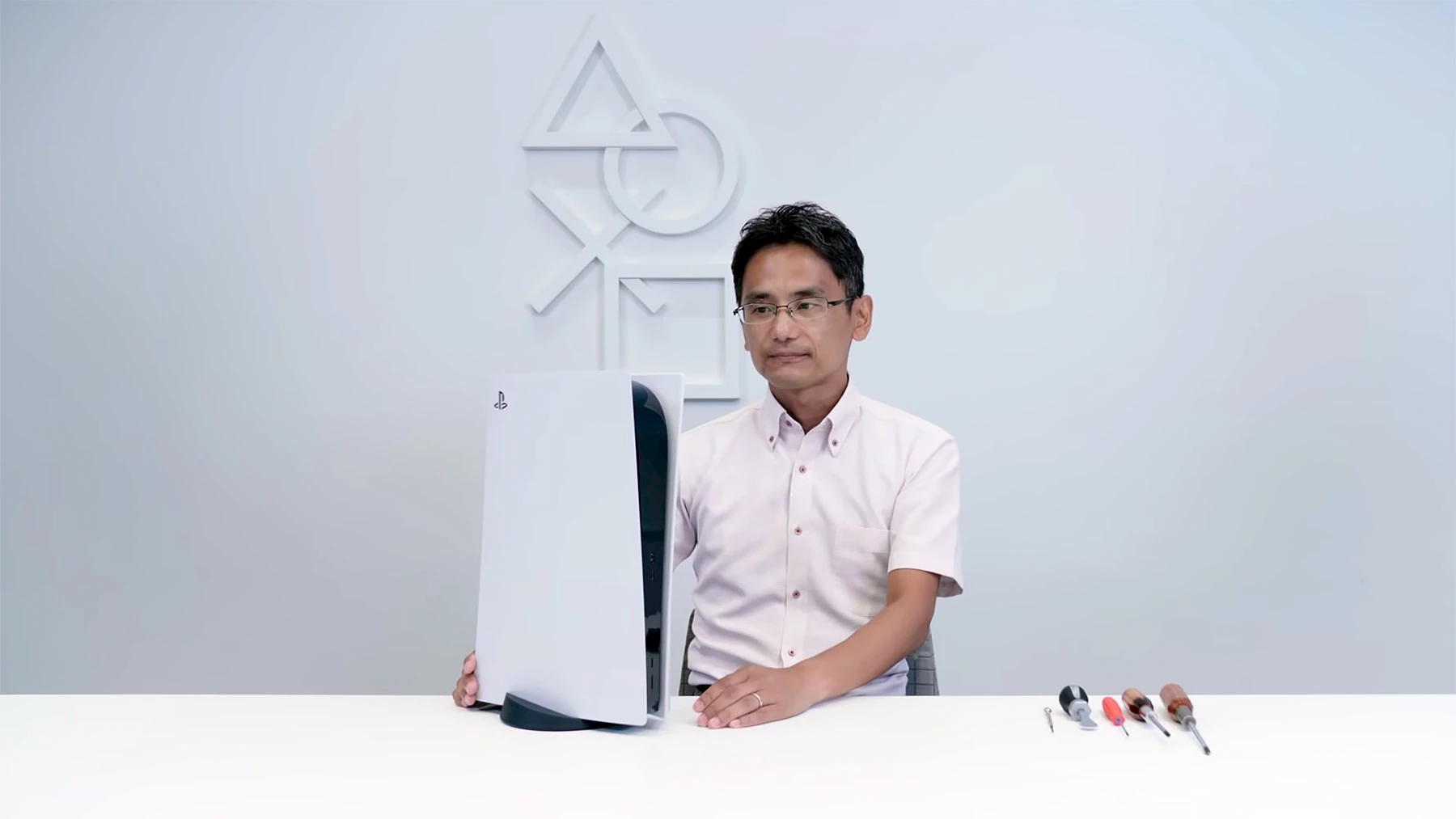
Yasuhiro Ootori. © Sony Interactive Entertainment.
It seems that Sony beat iFixit to the punch by making their own teardown video of its PlayStation 5 console, long before its launch, scheduled for November 12. In the video, in Japanese with English sub-titles, Yasuhiro Ootori, VP of mechanical design at Sony Interactive Entertainment, thoroughly and painstakingly dismantles the new console. The video reveals much about the design of the machine, especially the engineering pains taken to ensure proper cooling. We learned, among other things, that Sony uses a liquid metal thermal conductor on the surface of the AMD RyZen SoC instead of the usual heat paste in order to optimize heat transfer to a huge dissipator. The entire system seems easy to take apart with a few standard screwdrivers. Even so, we’ll have to wait for iFixit’s teardown to get a repairability score. Kyle Wiens, iFixit’s CEO, said in an email to Motherboard, “This level of transparency from a manufacturer is refreshing”. Indeed, electronics manufacturers providing instructions on how to take their products apart is as rare as an oasis in a desert.
⇨ YouTube, “PS5 Teardown: An up-close and personal look at the console hardware.”
⇨ Ars Technica, Kyle Orland, “The first PlayStation 5 teardown reveals some hardware secrets.”
AI applied to videoconferencing
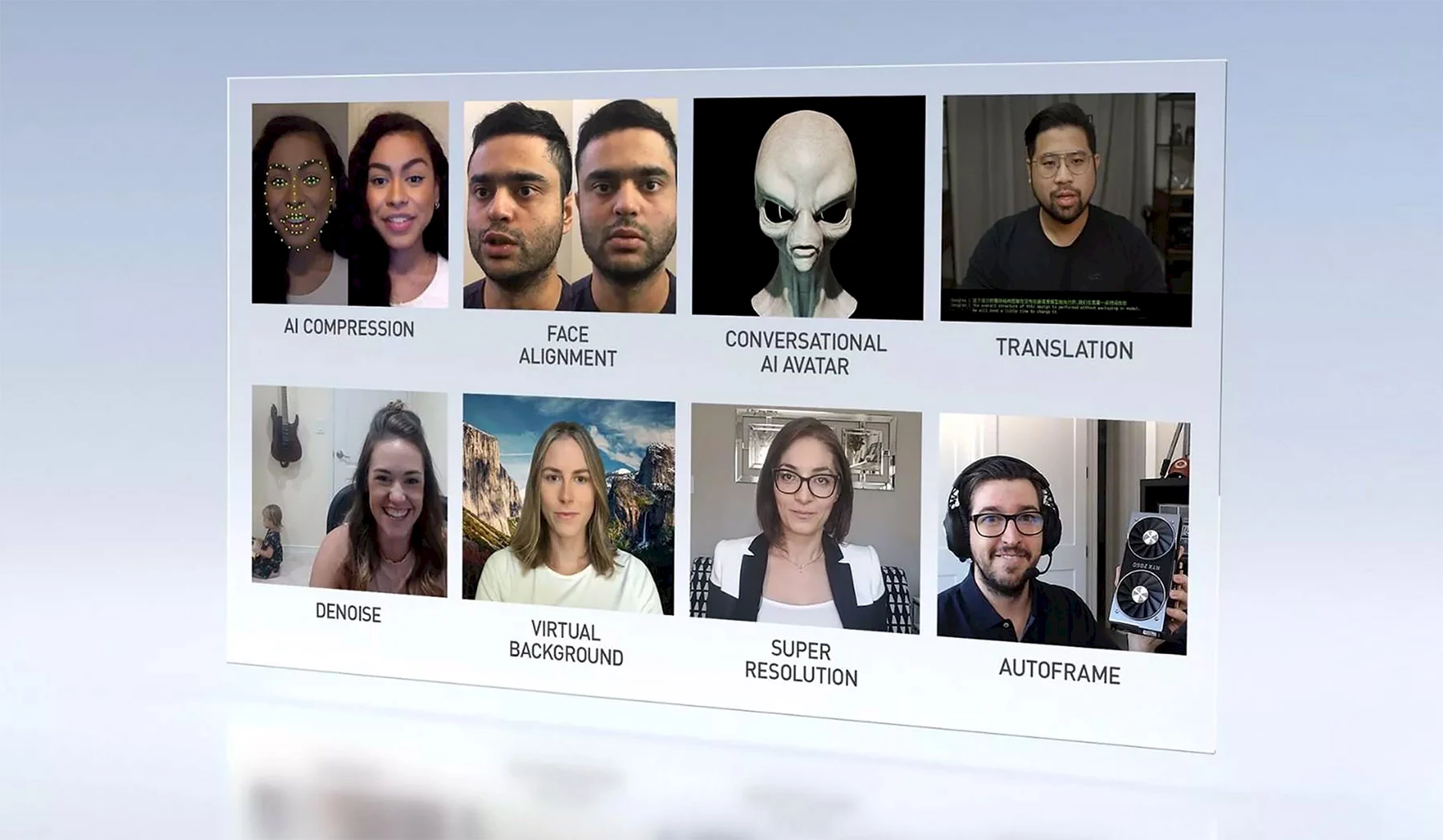
Maxine. © Nvidia.
Videoconferencing systems have become an overnight must for many working stiffs. But who hasn’t experienced some or all of the following problems with them: bandwidth slumps that freeze the image, distracting background noises, or just plain poor video. To address the most common videoconferencing issues, Nvidia launched a new videoconferencing toolkit targeted at developers, called Maxine. The system processes video data in the cloud, on Nvidia GPUs. Using AI, Maxine can realign callers’ faces and gazes so that they’re always looking directly at their camera, significantly reduce the bandwidth requirement for video by only transmitting “key facial points,” and upscale the resolution of videos. Other features available in Maxine include face re-lighting, real-time translation and transcription, and animated avatars.
⇨ YouTube, “AI-Powered Video Conferencing with NVIDIA Maxine.”
⇨ YouTube, “Inventing Virtual Meetings of Tomorrow with NVIDIA AI Research.”
⇨ The Verge, James Vincent, “Nvidia says its AI can fix some of the biggest problems in video calls.”
Google Workspace

Google Workspace. © Google.
Google announced a major rebranding of its G Suite office tools, now called Google Workspace. The rebranded suite, which already includes Gmail, Docs, Meet, Sheets and Calendar, will progressively see new features added to strengthen interconnectedness. To reflect this, all the applications are getting new icons in a matching livery of Google’s four iconic colors (blue, red, yellow and green), which, incidentally, may make them harder to tell apart at a glance. It seems that with this rebranding, Google is signalling that it is investing heavily in its suite to compete against Microsoft Office. Google Workspace plans start at CAD8 per month per user with the Business Starter pack, move up to CAD16 for the Business Standard pack, and top out at CAD23 for the Business Plus pack.
⇨ Ars Technica, Ron Amadeo, “Behold the new icons for Gmail, Drive, Calendar, and Meet.”
⇨ Google Could Blog, Javier Soltero, “Introducing Google Workspace.”
Unreal Engine on-board
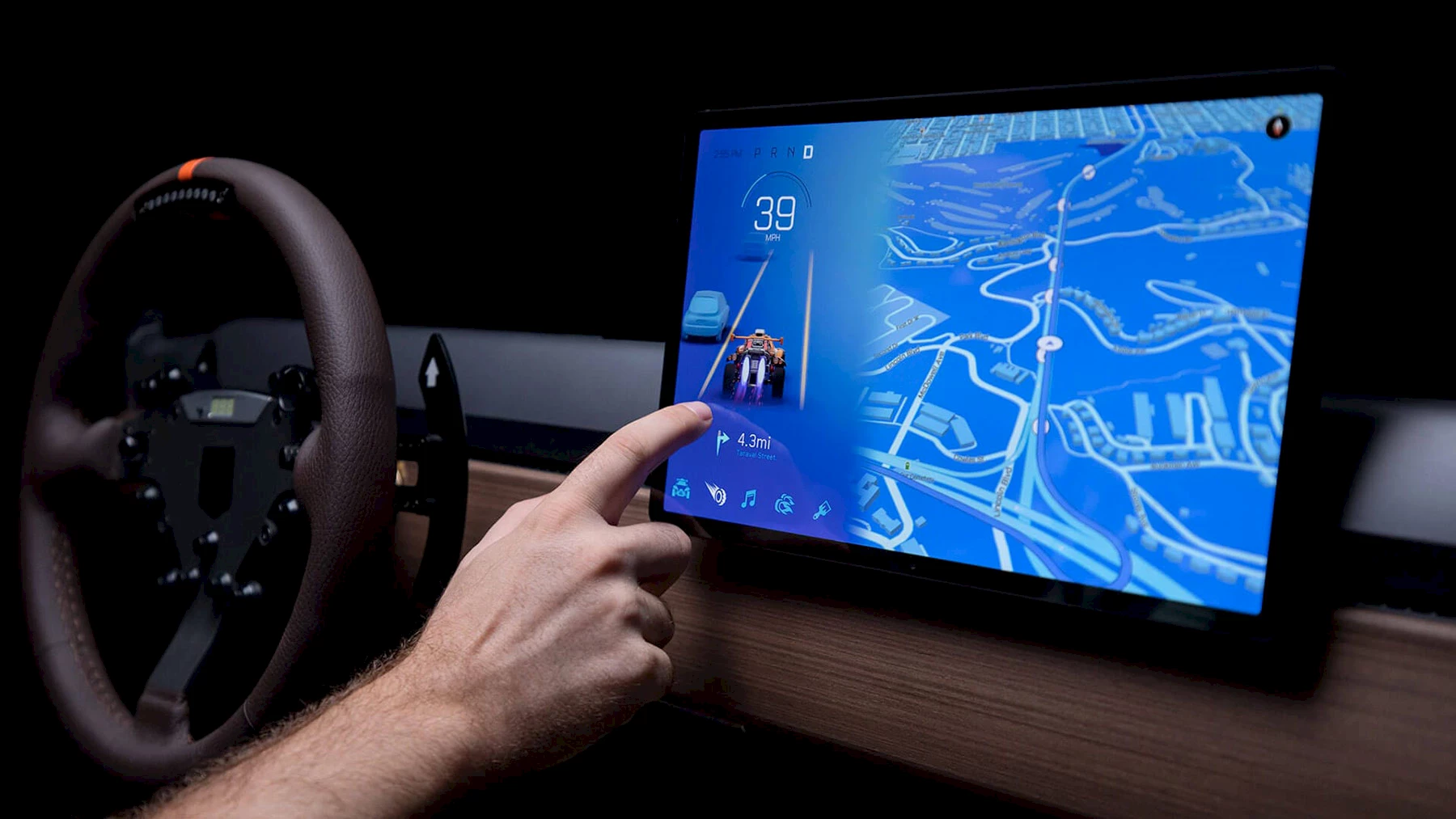
Unreal Engine HMI. © Epic Games.
Talk about diversifying in new directions! Fortnite creator Epic Games is partnering with General Motors to use its Unreal Engine game development platform to build in-car software. The first car to use Unreal Engine’s human-machine interface (HMI) tools will be GMC’s first electric Hummer, which will be unveiled on October 20. In a press release, the company said, “At Epic Games, we’ve long been interested in the way the requirements for HMI development overlap with those of game development. Much of the functionality required to create HMI systems has been available in Unreal Engine for some time.” Epic Games has put together a team of artists and engineers dedicated to HMI to support all car builders interested in using Unreal Engine for their onboard interfaces.
⇨ YouTube, “Unreal Engine HMI Initiative | Automotive.”
⇨ The Verge, Nick Statt, “GMC’s all-electric Hummer will be the first car with software built using Epic’s Unreal Engine.”
